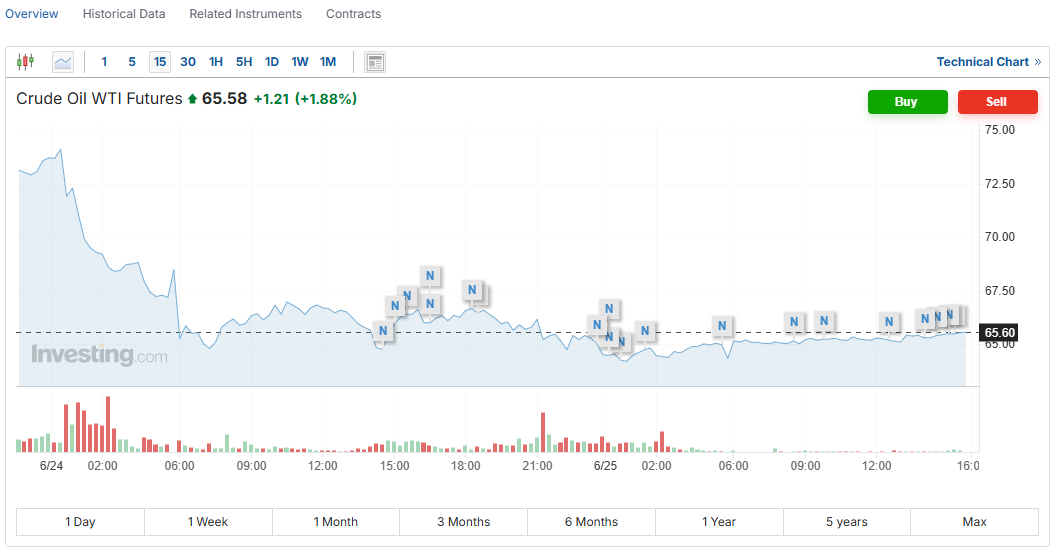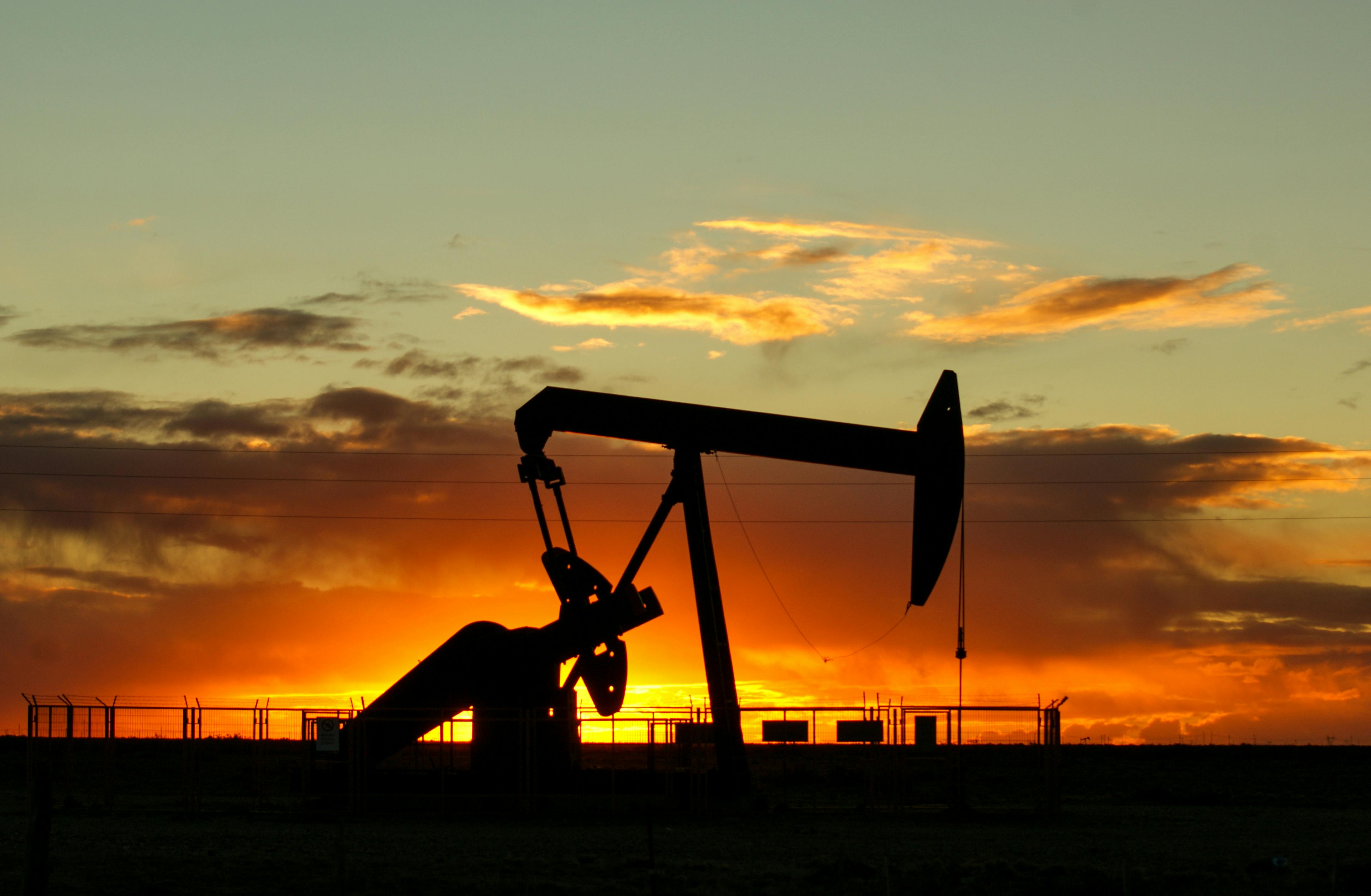When I filled up my gas tank last week, I noticed something: prices had jumped. Nothing dramatic, just enough to make me pause and raise an eyebrow. At first, I chalked it up to the usual summer travel spike. But then the headlines started rolling in—an Israeli strike in Iran, tensions escalating, markets reacting. And suddenly, that few extra bucks at the pump felt like a sign of something bigger brewing.
This isn’t the first time the Middle East has reminded the world that it’s still the heartbeat of global oil. But every time conflict sparks in that region, especially involving Iran, it sends a shiver down the spine of the global economy. Why? Because this isn’t just about politics—it’s about pipelines, trade routes, inflation, and how much your next grocery trip might cost.
A War of Nerves—and Oil

Google Finance
Let’s be real: the war hasn’t stopped oil from flowing—yet. But markets aren’t built on what’s happening today. They run on what might happen tomorrow. And right now, that uncertainty is sending oil prices climbing fast.
To put it simply: oil went from around $66 to $74 a barrel in just a matter of days after the conflict flared up. That’s not because supply vanished. It’s because traders, analysts, and investors are watching the situation like hawks, wondering if we’re on the edge of a much bigger storm.
If the U.S. jumps in—or if Iran retaliates in ways that disrupt oil shipping lanes (especially the Strait of Hormuz, a narrow waterway where 1 in every 5 barrels of oil travels)—then we’re looking at a completely different picture. We’re not talking $74 a barrel. We’re talking $100, maybe even $120.
History Has a Way of Repeating Itself
This isn’t our first rodeo. We’ve seen this pattern before—Iraq, Afghanistan, Libya. The U.S. steps in, promising quick resolutions, and years later we’re still dealing with the aftermath. These conflicts cost trillions, and while some say they were strategic, most of us just remember the price hikes, the job losses, and the uncertainty.
The fear now is that history might rhyme again. If we end up in another long, expensive conflict, the ripple effects won’t just be overseas—they’ll be at our doorstep.
What This Means for the Everyday Person
Here’s where it hits home: higher oil prices mean higher everything.
Not just gas. Think deliveries. Groceries. Utilities. The cost of goods. Flights. Everything relies on energy. And when energy costs spike, so does inflation.
That matters because the Federal Reserve—already walking a tightrope with interest rates—might have to hold off on lowering rates if inflation picks back up. That means borrowing stays expensive. Mortgages stay high. Business slows down. It’s a domino effect.
So, Where Are We Headed?
No one knows for sure. Maybe this flares up and cools off quickly. If so, oil prices might settle back down. Markets could breathe a sigh of relief, and we’ll go back to complaining about the usual stuff.
But if it drags on—or worse, expands—we’re looking at a stretch of economic tension that could hit hard. Not just for Wall Street types. For people like you and me. Folks trying to buy a home. Start a business. Plan a vacation. Budget for groceries.
Final Thoughts
It’s easy to tune out global headlines. They often feel distant, like someone else’s problem. But sometimes, those distant events have a funny way of reaching into your life—in subtle but serious ways.
This Iran-Israel conflict? It might seem like just another foreign flare-up. But watch your gas prices. Watch the news. Watch how quickly something happening thousands of miles away can influence what you pay, how you spend, and what choices you can afford to make.
Because in this global economy, nothing happens in a vacuum. And whether we like it or not, war costs all of us something.


